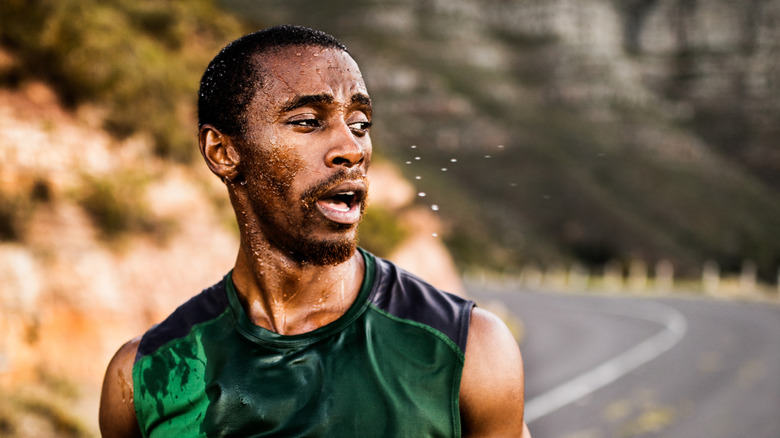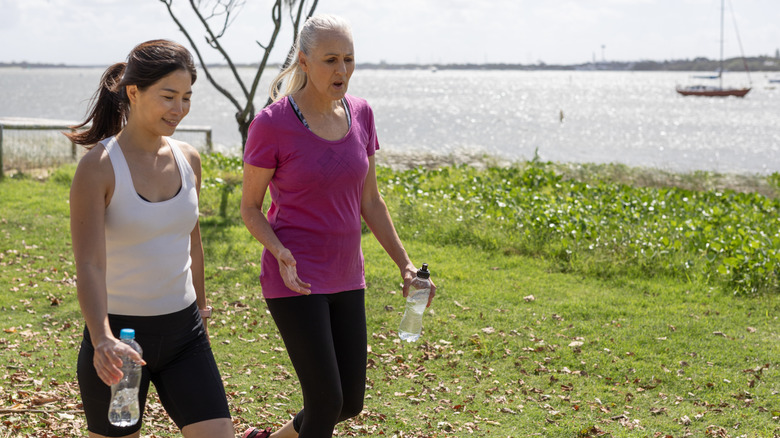Why You Should Start 'Heat Training' Your Body Weeks Before Heading For A Hot Destination
Heat is becoming a greater consideration for travelers around the world, as many destinations are experiencing more heat waves and sweltering days now than at any time in the last 70-plus years. Every year, you're hearing about new heat-related concepts or old ones that are being reintroduced to try to help people navigate dangerous temperatures, like the Urban Heat Island effect, which you should consider before planning your summer vacation. Travelers are also becoming increasingly more interested in cooler destinations or experiences, such as this lesser-known forest in Maui that's ideal for hiking to beat the Hawaii heat. But if you're heading to a hot destination, avoiding the heat probably won't be possible, especially if you're unlucky enough to experience a heatwave while visiting. That's where "heat training" (aka heat acclimatization) comes in.
Heat training isn't a new concept; scientists have been studying the body's ability to acclimate and regulate heat since at least the 1950s. It's also been adopted by athletes around the world, such as the Australian racewalking team at the Tokyo Summer Olympics. However, in recent years, heat acclimatization has been embraced by travelers, mostly backpackers or hikers, to help keep them safe when exploring hot destinations. Heat training essentially involves acclimatizing your body to hotter temperatures through controlled and regular exposure. This is usually by exercising, such as walking or cycling, but can also be achieved by sitting in a sauna or steam room.
You may be thinking that this all sounds a little extreme for your upcoming beach holiday in Greece or a casual trek in California. However, it's in your best interest to overestimate the dangers of heat; underestimating hot conditions has resulted in traveler deaths throughout America and around the world. In July 2024, a heatwave throughout Oregon was linked to four deaths, with a record-breaking temperature of 103 degrees Fahrenheit. About one month earlier, famous British TV presenter and doctor, Michael Mosley, perished while hiking in Greece in temperatures of 104 degrees Fahrenheit. His death was linked to heat exhaustion.
How to heat train effectively and safely
Heat training has been the subject of numerous peer-reviewed scientific studies. A 1998 study by Lawrence Armstrong, director of the Human Performance Laboratory at the University of Connecticut, demonstrated that proper heat acclimatization can take up to 14 days, but you can still see some positive effects in the first five. Generally speaking, if you commit to controlled heat acclimatization for one to two weeks, you should see improvements in heart rate, skin temperature, sweat rate, blood flow, and exertion when you're in a hot environment.
However, it's important not to do too much too soon when heat training and slowly develop your heat tolerance. This progression may vary for different people. For instance, if you just want to get used to being outside in hotter temperatures, you could start off spending 20% of your day outside and build it up gradually over one or two weeks. If you're planning on hiking, try walking for 20 minutes the first day, then increase that time each day until you're doing about 90 to 180 minutes by the end of two weeks. David Fifer, an associate professor of emergency medical care at Eastern Kentucky University, says in an interview with Backpacker, "Your baseline fitness is going to be a big factor in your acclimatization plan, and the more fit you are, the easier it's going to be."
Just remember, heat training has its limits and risks, including causing heat exhaustion before you even go on holiday. In certain temperatures and humidities, it may also not be as effective. So it's best to approach it cautiously and with advice and guidance from a health professional, such as your doctor. If you're not sure it's the right approach for you, here are some of the other best ways to avoid heat stroke while doing outdoor activities.

